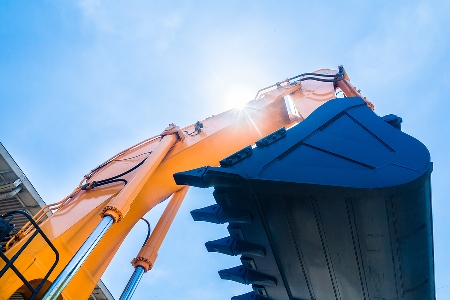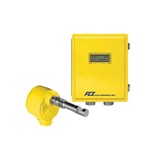From mining and mineral exploration to crisis care, hospitals and super funds, IBISWorld industry analysts have compiled data and analysis based on the business researcher's industry risk rating, measuring the likelihood that investors or creditors will receive a negative return on investment in an industry over a period of 12 to 18 months.
Risk ratings are calculated based on analysis of an industry's structural, growth and sensitivity risks. IBISWorld risk scores are based on a scale of one to nine, wherein one represents the lowest risk, and nine represents the highest.
Electricity generation and distribution
Electricity distribution networks and fossil fuel generation assets represent large capital investments that are operated over the long term. This leaves both industries exposed to shifts in demand trends and government intervention.
Demand for centrally generated electricity has fallen over the past five years, as households and businesses have increasingly invested in energy-efficient appliances and solar panels to reduce their reliance on the grid. Structural changes in Australia have also resulted in a shift away from manufacturing towards less energy-intensive service-based industries. This includes the closure of major operations in energy-intensive industries, such as petroleum refining and aluminium smelting.
"Firms have invested in distribution networks and generation assets based on long-term trends in electricity consumption. As a result, they have a limited ability to reduce supply in the short term because much of Australia's generators are coal-fired and less able to meet fluctuating electricity requirements. Electricity supply and demand is consequently mismatched, creating a higher level of risk for fossil fuel generators and electricity distributors," said IBISWorld senior industry analyst Lauren Magner.
Construction services
Mining and construction companies secure their required plant and equipment through a combination of purchasing and hire. Structural steel erection is an integral part of many construction projects. Heavy industry and other non-building construction companies are involved in constructing engineering or infrastructure projects. These industries are affected by capital expenditure by mining companies and demand from construction activities.
"Demand from infrastructure markets has helped to offset weak construction trends in the commercial and industrial building over the past five years," said Magner. "However, construction service industries have suffered due to declining public sector investment in institutional building projects."
In addition, the completion of major mining projects over the past five years has resulted in a winding back of investment in mineral and energy developments, contributing to increased risk for construction services firms. Capital expenditure on mining is projected to decline by an annualised 2 per cent the next five years to $65 billion, due to the softening of demand for commodities in China and the shift from mine construction to production.
Mining and mineral exploration
Black coal is a key input used in energy generation and steelmaking. Mineral explorers locate ore bodies that can subsequently be mined and provide data so that companies can evaluate the viability of deposits. The primary risk factors affecting these industries include a high level of competition, the lack of industry assistance, a very high level of volatility due to currency fluctuations, and changes in production volumes and prices.
"These factors are offset somewhat by high barriers to entry in the form of high capital investment requirements, a lengthy approval process for new mines or mine expansions, and the need to secure long-term contracts – all of which protect incumbent operators from competition," said Magner.
Lower commodity prices have constrained revenue growth for these two industries, signalling that mining industries are transitioning to cost management rather than expansion. The world price of steaming coal has fallen substantially over the past five years as supply has outstripped demand. Coal producers struggle to scale back production, as miners are often tied to rail and port contracts that oblige them to pay shipping costs even if they do not ship any product. This has resulted in miners continuing to put coal into the market, deflating prices further.
Manufacturing
Fertiliser manufacturers play an essential role in ensuring that Australia's agricultural systems are both economically efficient and sustainable. The fertiliser manufacturing industry relies on the local farm economy, as well as imported product and global fertiliser prices. Competition within the industry is high, with industry products considered to be global commodities. Therefore, firms compete intensely on a low-cost basis. Declining fertiliser prices are anticipated to negatively affect the industry's revenue and risk rating in 2015-16.
Cigarette and tobacco product manufacturers have faced increased risk due to greater awareness of the health risks associated with smoking and the success of anti-smoking campaigns, including recent plain packaging legislation. "This risk is partly offset by high barriers to entry in the form of integrated production and distribution by current industry players, consumer brand loyalty and the declining popularity of the industry's products in Australia," said Magner.
Operators in the petroleum refining and petroleum fuel manufacturing industry are exposed to fluctuations in input costs, such as the world price of crude oil. All industry participants deal on the same global market for oil and transact frequently. This means that movements in the crude oil price are passed on quickly and in full to downstream industries, deflating or inflating industry revenue in the process. The world price of crude oil has fluctuated significantly over the past five years, contributing to increased risk for the industry.
An ageing population
When looking at the safest industries, a common theme is the effect of Australia's ageing population. The increase in the number of baby boomers moving out of the workforce is significantly affecting the risk of a number of industries. The trailers and caravan dealers industry is an example of an industry facing a period of relatively low risk, with the industry in the growth phase of its life cycle as a result of demand from travelling and comparatively wealthy retirees.
General hospitals are also benefiting from increased demand as a result of the ageing population, as well as increased private health insurance membership. Increasing government funding, high barriers to entry and low levels of volatility all contribute to a relatively low risk score for the general hospitals industry.
Superannuation funds have significantly benefited from government legislation that sets minimum superannuation contributions for employers. With approximately $838 billion in funds currently under management, earnings from management fees have been increasing rapidly. The superannuation funds management services industry is expected to grow at a compound annual rate of 10.2 per cent over the five years through 2014-15 and 8.1 per cent per annum over the next five-year period.
The custody, trustee and stock exchange services industry has also benefited from growth in superannuation funds. This has led to a rising number of stock market trades and increases in advisory services. "The ageing population has fuelled increasing inflows to this industry through people seeking to increase their retirement income," said Magner. This trend is expected to drive annualised revenue growth of 7.6 per cent over the five years through 2014-15. Consequently, industry risk is at a low level.
Stable industries
The remaining five safest industries, waste remediation and materials recovery services, veterinary services, payroll and other office administrative services, casinos, poultry processing, and crisis and care accommodation, span disparate areas of the Australian economy. These industries, however, display a number of common characteristics, which contribute to low risk scores. These include relatively low revenue volatility, a low level of international trade and medium levels of competition.
"Rising household disposable income and continued population growth are combining to contribute to steady demand in these largely stable industries," concluded Magner.





-160x160-state_article-rel-cat.png)
